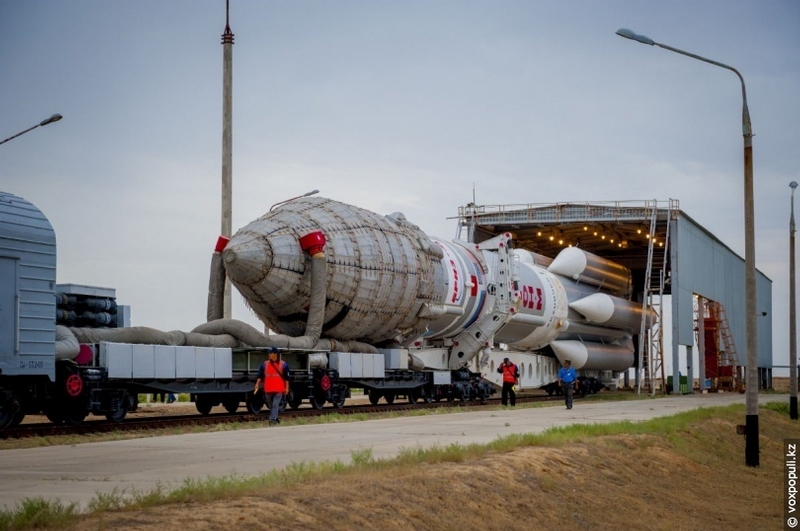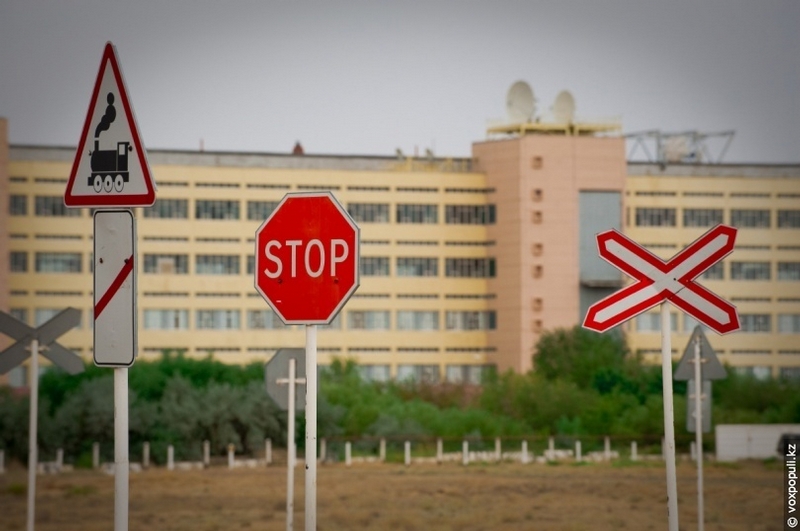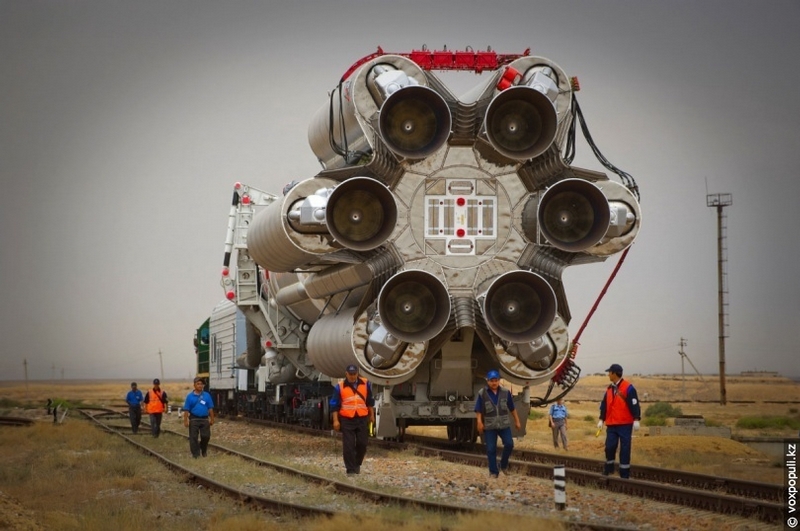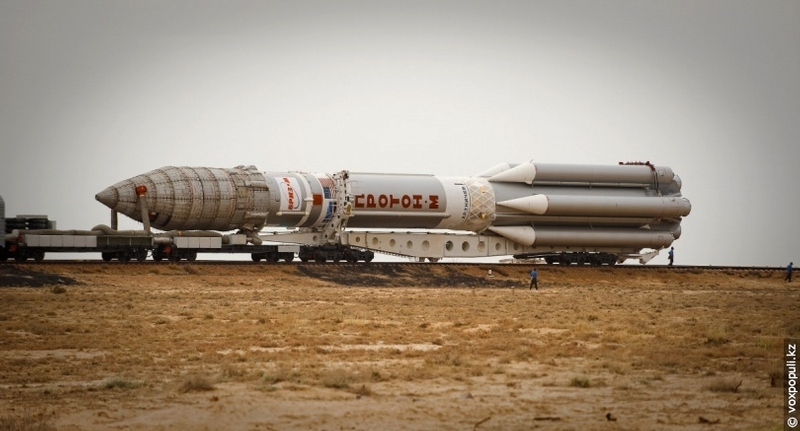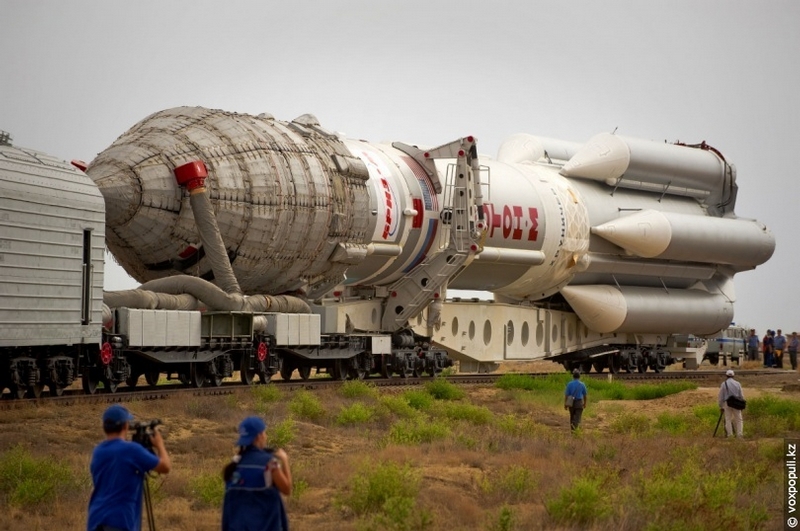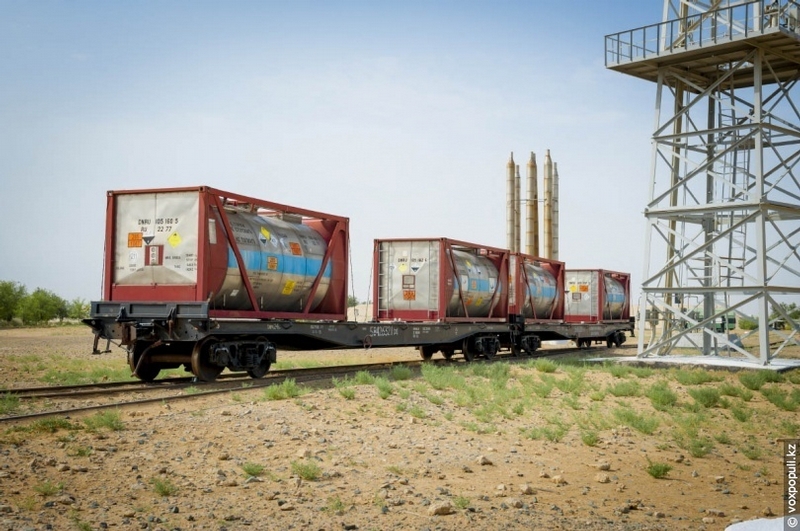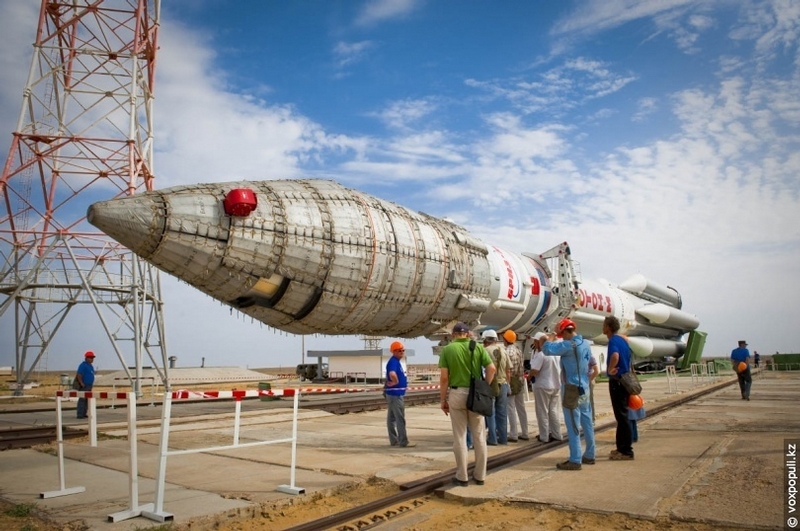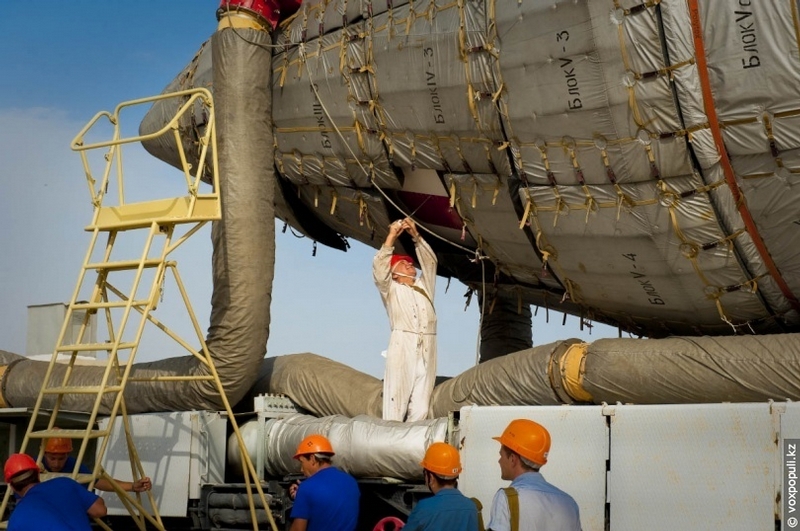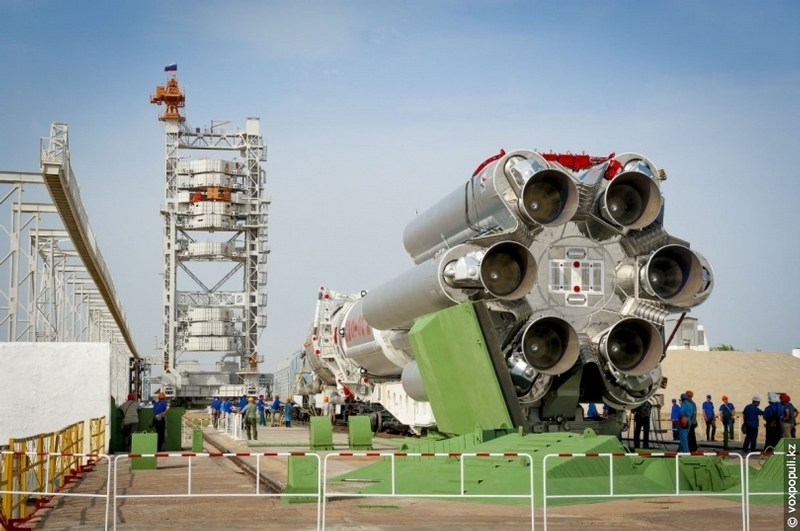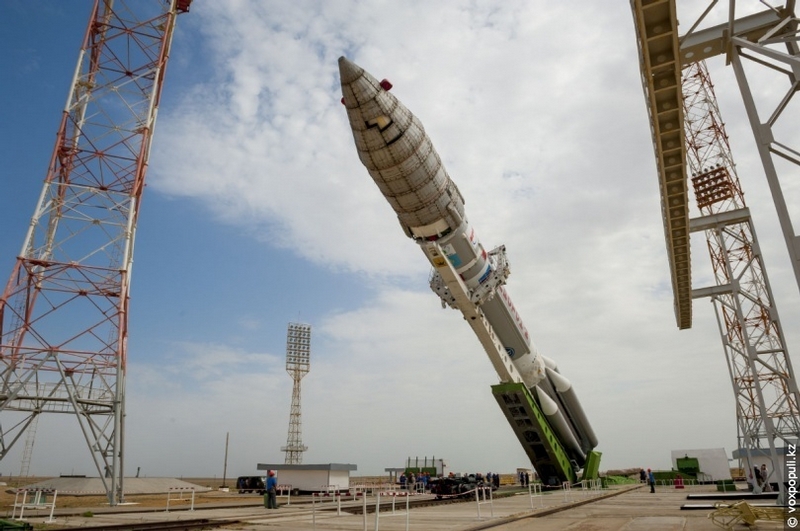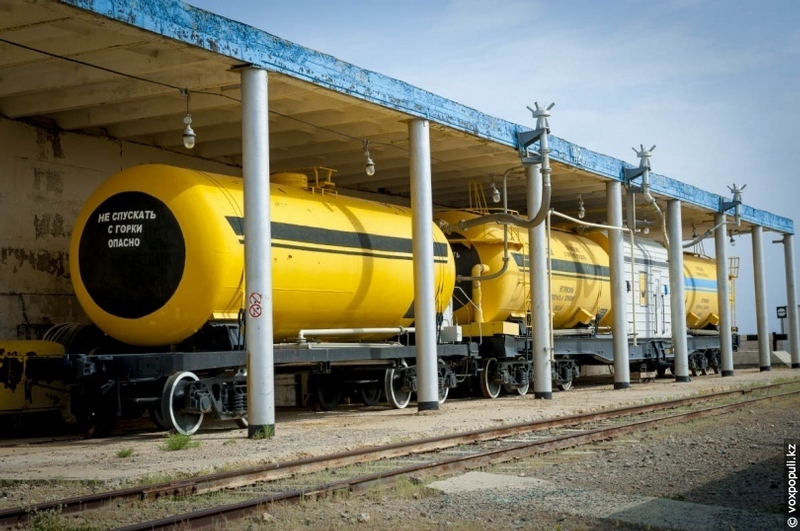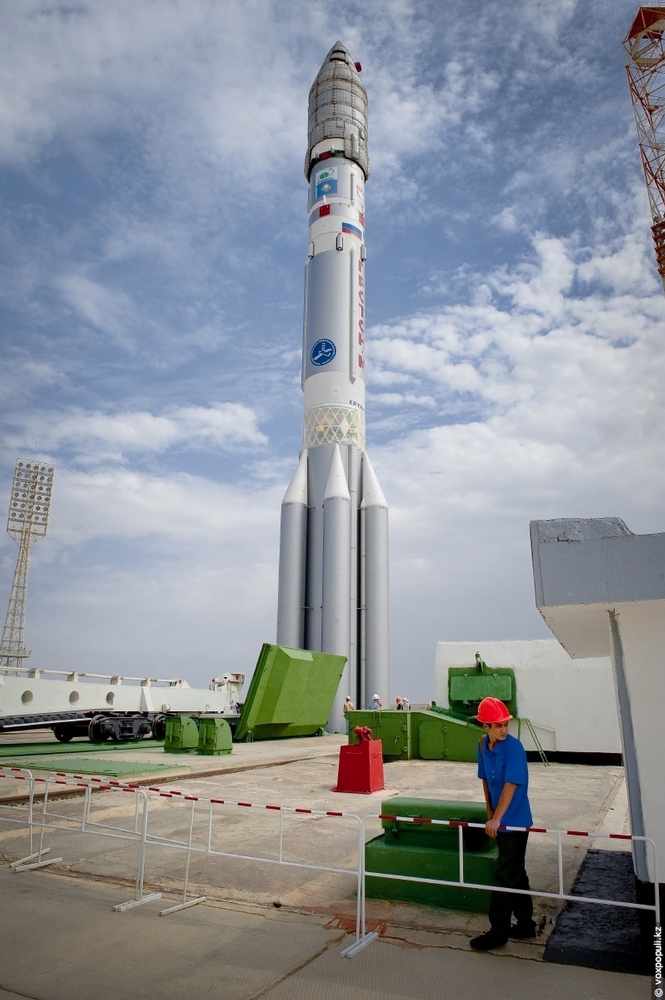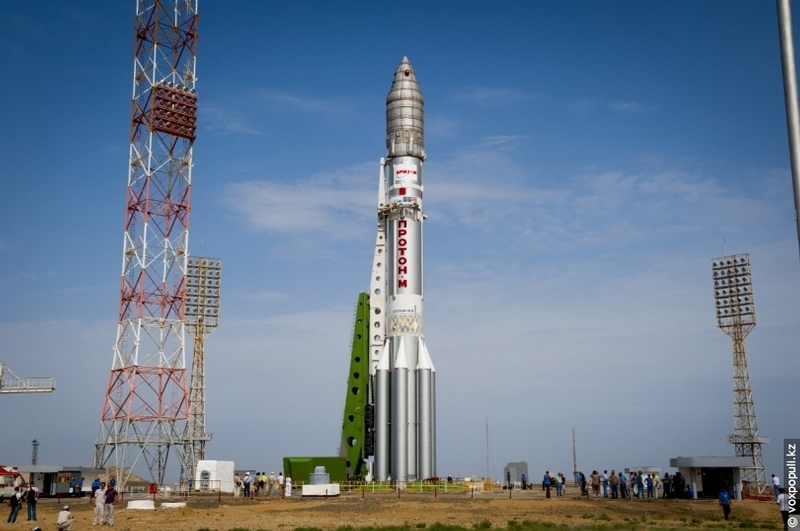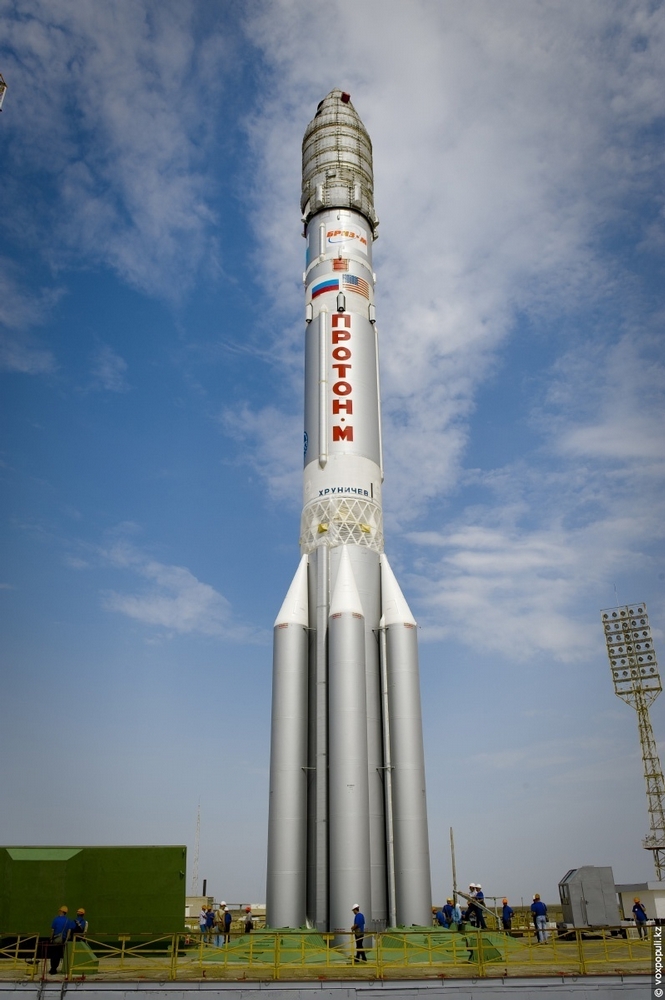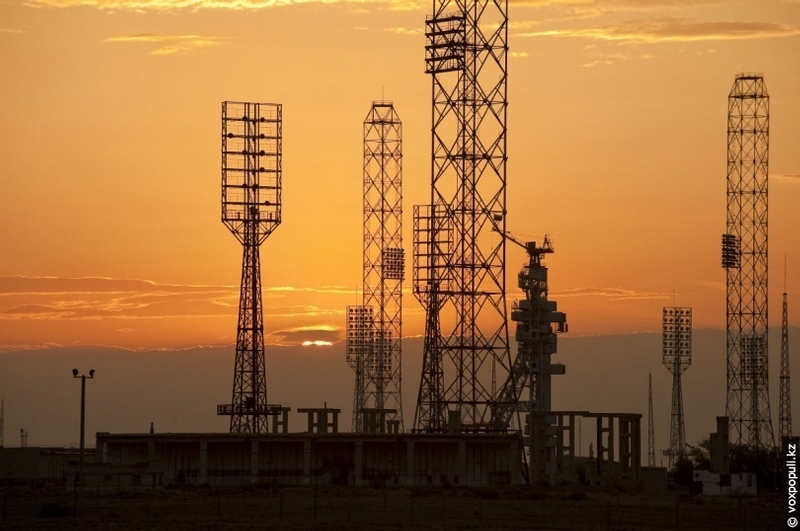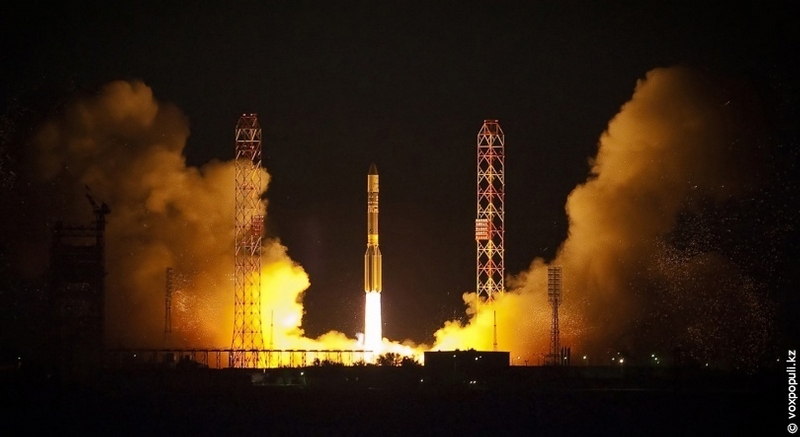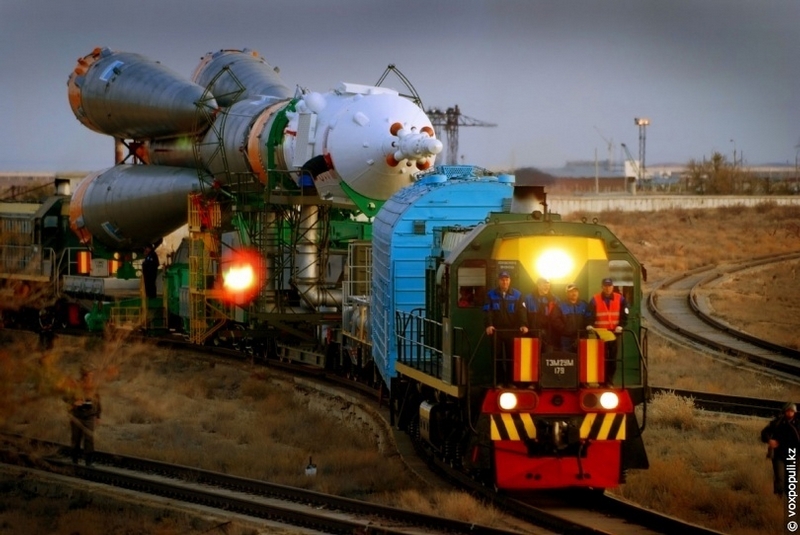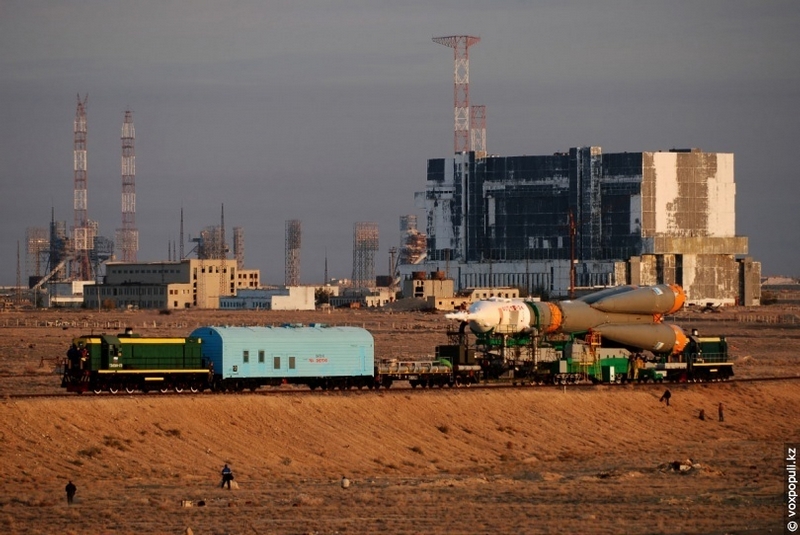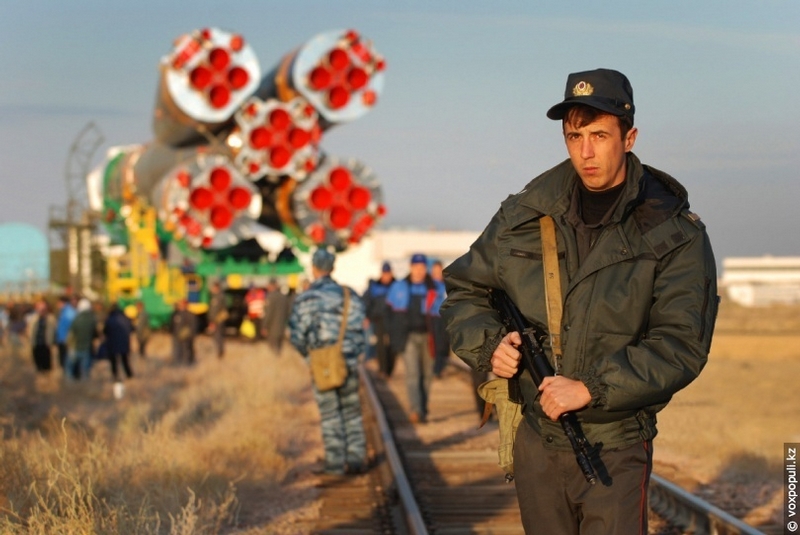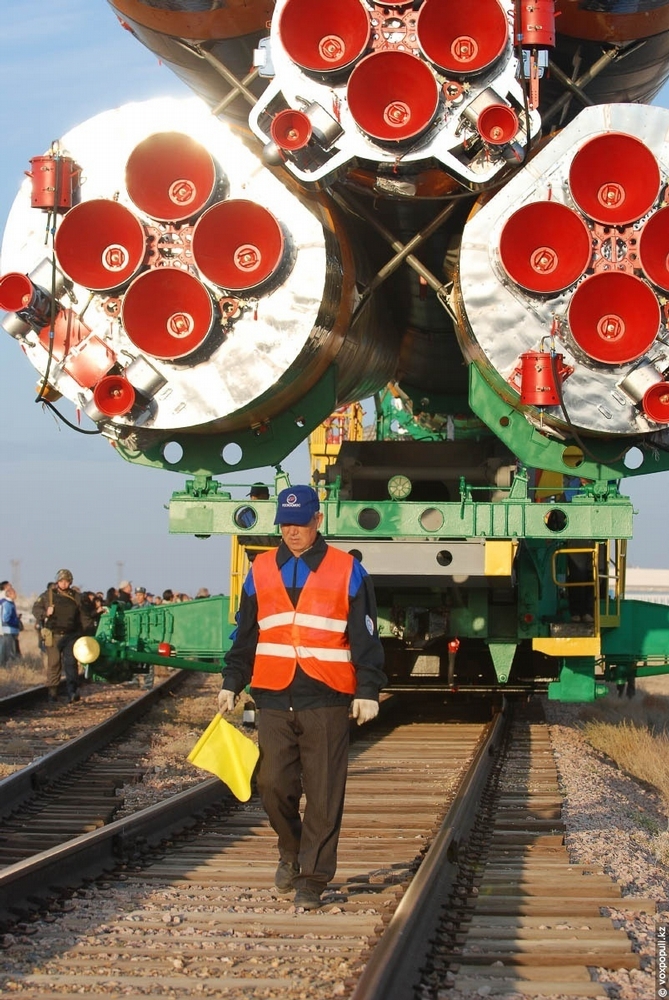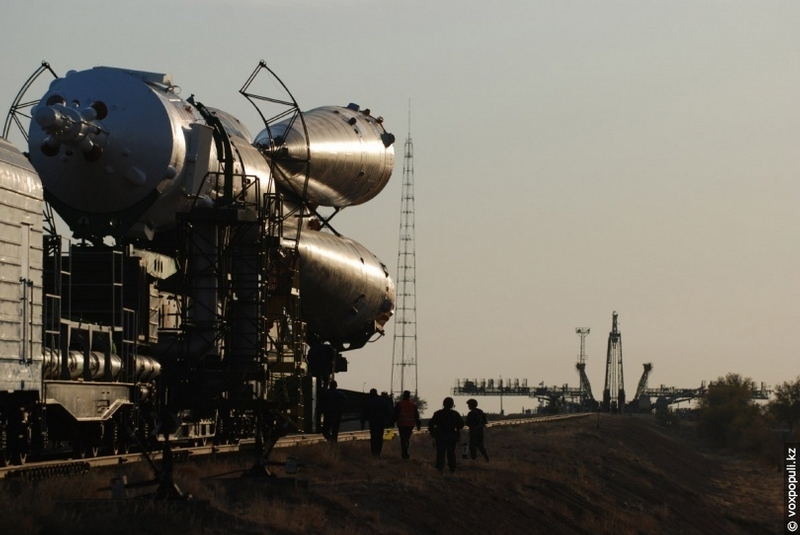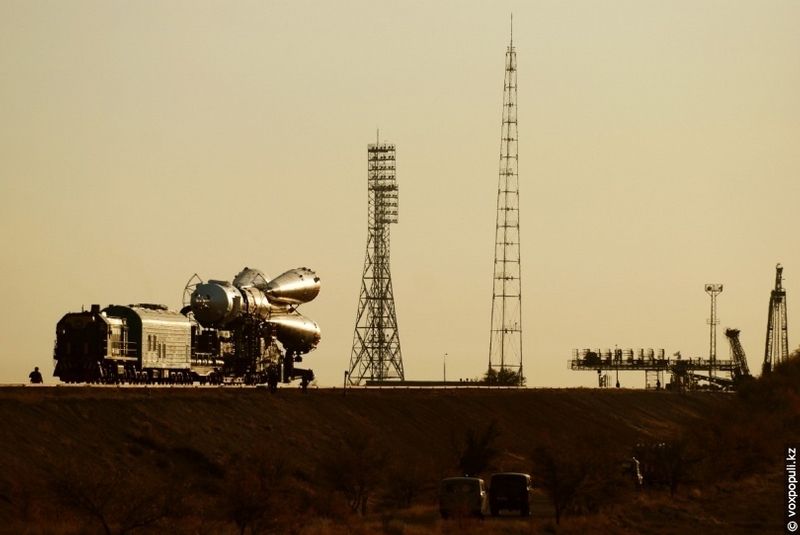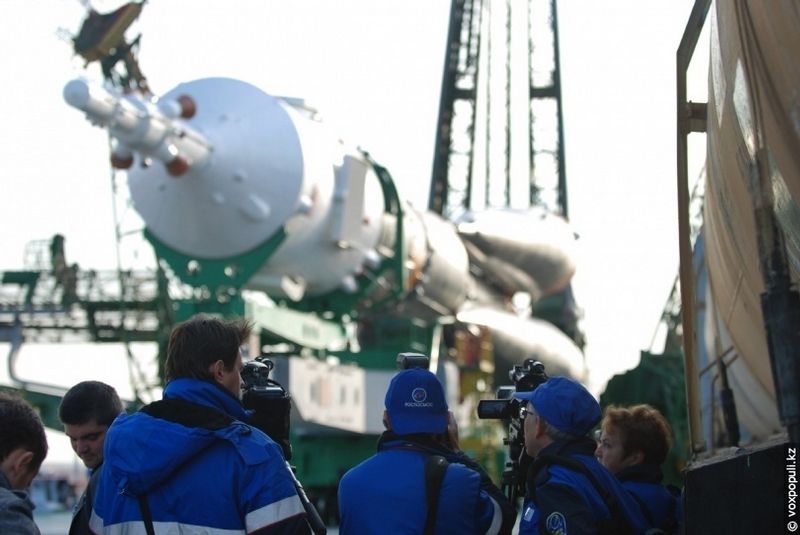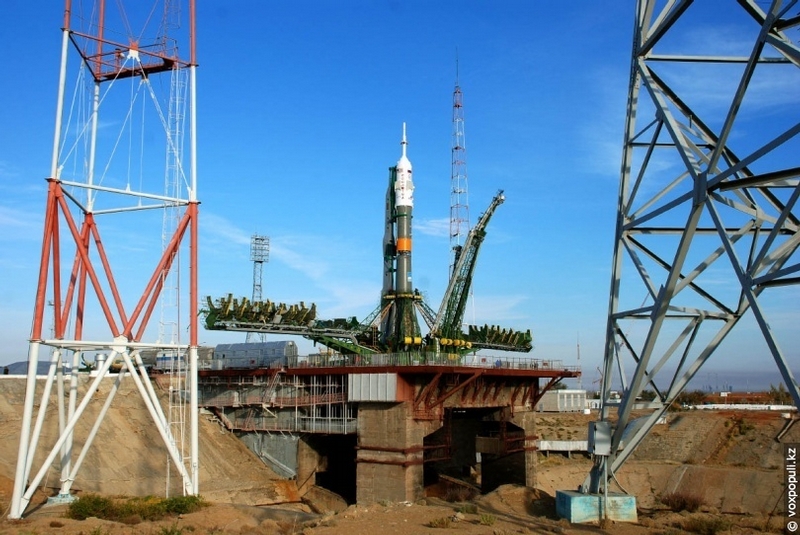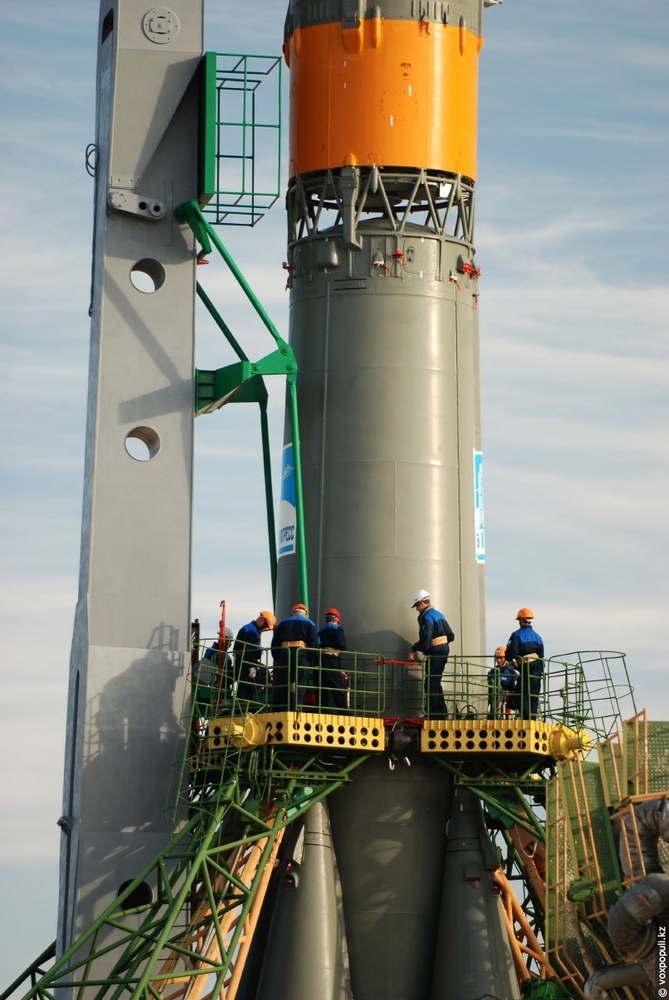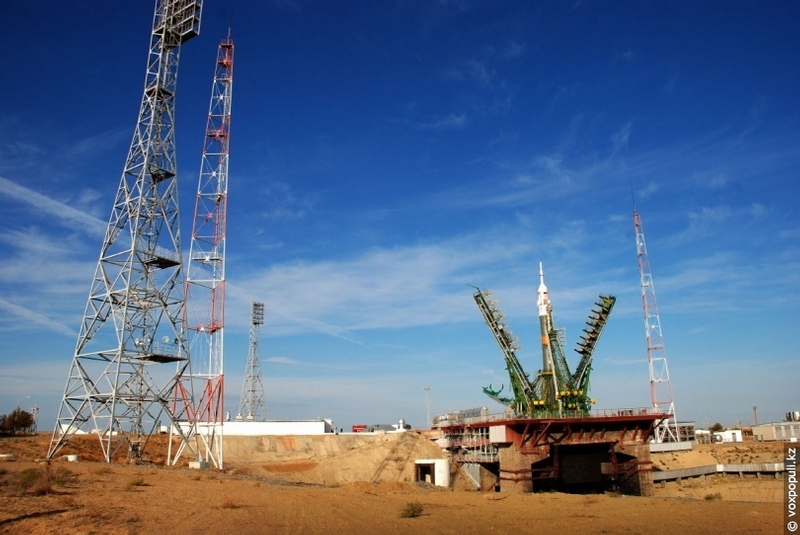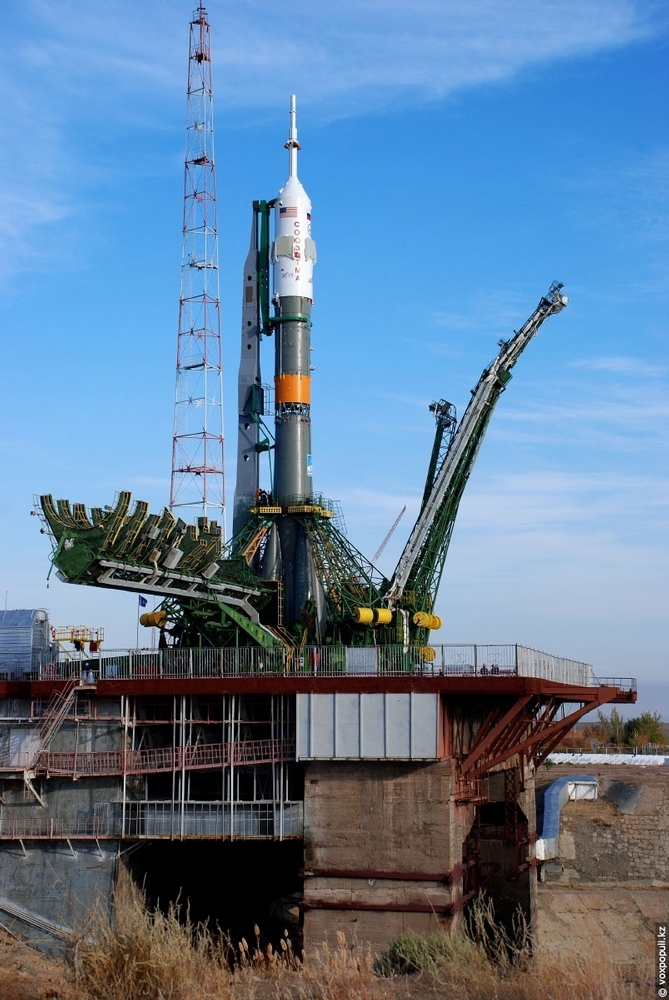Cosmodrome Baikonur located in the desert of Kazakhstan plays a significant role for space exploration. We have already shown you plenty of images from there but it’s always interesting to come back to Baikonur. These images, taken by blogger and journalist Grigoriy Bedenko, feature the process of preparation for the launch of space mission vehicles “Proton-S” and “Soyuz-TMA”.
The heaviest Russian space mission rocket “Proton-M” is launched only from Baikonur. Only here they have required facilities and infrastructure for maintanance of this highly complicated space-rocket system.
The journey of the rocket to space begins with the maintenance checkout facility of the cosmodrome. “Proton-M” comes here disassembled from numerous enterprises of the Russian space center of M.V. Khrunichev. Then the rocket is assembled and tested. Upon testing the head is mated with the vehicle.
The special rail transport moves at speed of 5-7 km/h. It is maintained by the team of well-prepared engineers. One more group of specialists who provide safety at the cosmodrome are inspecting the railroad. Any load beyond the track capacity may damage the rocket.
The dimensions and abilities of this rocket are trully impressive. Its length is 58,2 m, mass is 705 tonnes (when prepacked). The power of six engines of the first-stage vehicle is about 1000 tonnes. It can put into orbit objects with mass up to 25 tonnes, and to the high geostationary orbit, objects as heavy as five tonnes. That is why “Proton” is irreplaceable when it comes to a launch of telecommunications satellites.
Different modifications of the launch vehicle have been in use since 1967. All great Soviet projects for exploration of space and the Solar system would never be realized without this rocket. It is highly reliable.  Out of 370 launches there were only 44 failures. Its reliability interested the Americans – in the 90s there was created a joint company ILS that positioned the vehicle at the telecommunication system market of the U.S. Today most of American civil communication satellites are launched by “Proton-M” from this very cosmodrome.
These tanks contain one of the fuel components for “Proton” – nitrogen tetroxide.
Camels watch the process of preparation with interest.
It takes the rocket three hours to travel the required distance.
The main disadvantage of “Proton” – highly toxic components of its fuel. The area where the first stage would fall gets contaminated. The operations for its cleaning are rather costly. Accidents in the early 2000s made the situation even worse. The authorities of Kazakhstan were highly displeased. The old modifications of the vehicle were replaced with new ones with a digital control system and the system of remaining fuel drain in the topside ionosphere.
Another project “Angara” is considered to be environmentally safe, its fuel components are kerosene and oxygen. “Angara” is going to replace “Proton-M” in the near future. However it will be launched from the new cosmodrome which is currently being built in the Far East of Russia.
Currently there are four launching pads for “Proton” launching here. However only three of them are in an operable condition. The complex is demilitarized now but former military men are still working here.
Final pre launch operations are rather complicated.
The vehicle is raised rather fast – for ten minutes or so.
Fully hermetic fuel tanks. The fuel does not contact  the environment.
This “Proton-M” was launched on July 16, 2011. It successfully put to orbit two telecommunication satellites – American SES-3 (ОS-2) and Kazakh “KazSat-2”.
Many modern breakthrough technologies would not be possible without this rocket. With no exaggeration.
The sunset over Baikonur is always technologically beautiful!
Upon arrival to the launching pad the rocket spends four days there until the start – this time is required to test and prepare all the systems. Right before the launch they have a meeting of a state commission. The rocket gets fueled six hours before the start. From this very moment all operations become irreversible.
The photo is taken six kilometers away from the pad.
After the launch the rocket leaves such a cloud of ice crystals.
This is “Soyuz-FG” launch vehicle, the modification of the legendary Soviet rocket designed by S.P. Korolev.
Even half a century after the first flight of a man to space this rocket remains to be the main segment of the world manned cosmonautics. Existence of the ISS would not be possible without it.
“Soyuz-TMA” transported to the launching pad where it has to be by 7 a.m.
Stray dogs inhabiting the place always watch how rockets are launched.
Just like 54 years ago all manned launches are executed from that very Gagarin’s pad.
The rocket is about to be positioned vertically.
“Soyuz-FG” and manned spaceship “Soyuz-TM” look impressive together on the pad.
“Soyuz-FG” is an environmentally safe rocket, its fuel is based on kerosene, oxygen and hydrogen peroxide.
“Soyuz-TMA” is used not only by Russian cosmonauts, but also their American and European colleagues.
We really hope that no political issues will influence such good cooperation of the nations in the sphere of cosmonautics!


